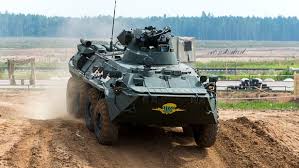
Breaking News
 This Housing Collapse Is WAY Worse Than 2008 -- And They're Hiding It
This Housing Collapse Is WAY Worse Than 2008 -- And They're Hiding It
 BREAKING: Assault Weapons Ban Just Passed For 2026 : 10 Years Prison Who Own This! (FAKE NEWS?)
BREAKING: Assault Weapons Ban Just Passed For 2026 : 10 Years Prison Who Own This! (FAKE NEWS?)
 GAME OVER: JP Morgan Flips LONG + China Ban Starts In 4 Days
GAME OVER: JP Morgan Flips LONG + China Ban Starts In 4 Days
 SILVER CRASHES TO $75 - But China Is Paying $89 (Ghost Week Trap)
SILVER CRASHES TO $75 - But China Is Paying $89 (Ghost Week Trap)
Top Tech News
 EngineAI T800: Born to Disrupt! #EngineAI #robotics #newtechnology #newproduct
EngineAI T800: Born to Disrupt! #EngineAI #robotics #newtechnology #newproduct
 This Silicon Anode Breakthrough Could Mark A Turning Point For EV Batteries [Update]
This Silicon Anode Breakthrough Could Mark A Turning Point For EV Batteries [Update]
 Travel gadget promises to dry and iron your clothes – totally hands-free
Travel gadget promises to dry and iron your clothes – totally hands-free
 Perfect Aircrete, Kitchen Ingredients.
Perfect Aircrete, Kitchen Ingredients.
 Futuristic pixel-raising display lets you feel what's onscreen
Futuristic pixel-raising display lets you feel what's onscreen
 Cutting-Edge Facility Generates Pure Water and Hydrogen Fuel from Seawater for Mere Pennies
Cutting-Edge Facility Generates Pure Water and Hydrogen Fuel from Seawater for Mere Pennies
 This tiny dev board is packed with features for ambitious makers
This tiny dev board is packed with features for ambitious makers
 Scientists Discover Gel to Regrow Tooth Enamel
Scientists Discover Gel to Regrow Tooth Enamel
 Vitamin C and Dandelion Root Killing Cancer Cells -- as Former CDC Director Calls for COVID-19...
Vitamin C and Dandelion Root Killing Cancer Cells -- as Former CDC Director Calls for COVID-19...
 Galactic Brain: US firm plans space-based data centers, power grid to challenge China
Galactic Brain: US firm plans space-based data centers, power grid to challenge China
Bulletproof metal foam could make military vehicles lighter and more efficient

Yet another comes from researchers at North Carolina State University, who have developed a new type of bulletproof material comparable in performance to conventional armor, at just half the weight.
The team behind the breakthrough was also responsible for an impressive bit of research in 2015, which led to a new kind of lightweight shieldingwith the ability to block X-rays, gamma rays and neutron radiation. A year later, it adapted its approach to produce a high-strength shielding capable of stopping bullets in their tracks. Other research groups have had similar success using graphene.
At the heart of all this is what is known as a composite metal foam (CMF). This can be made by bubbling gas through molten metal to produce a frothy mixture, which can then be cooled to form a lightweight matrix and embedded with hollow, metallic spheres. The result is a material much lighter than conventional metals but with comparable strength.
This time around the team led by Afsaneh Rabiei, a professor of mechanical and aerospace engineering, used this approach to produce a steel CMF embedded with steel spheres. This was then sandwiched in between a ceramic faceplate and a thin aluminum back plate and blasted with rounds of bullets to see how it stood up.



